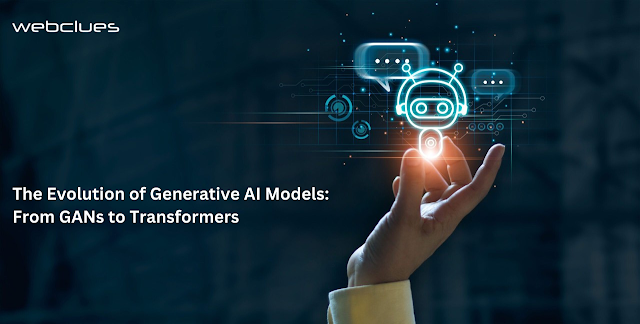Artficial intelligence (AI) has witnessed remarkable progress in recent years, with generative models playing a pivotal role in reshaping the landscape of machine learning. Among the various generative models, Generative Adversarial Networks (GANs) and Transformers stand out as revolutionary advancements, each contributing to the evolution of AI in distinct ways. The field of Generative AI Models continues to drive innovation and redefine the possibilities within artificial intelligence.
Generative Adversarial Networks (GANs), introduced by Ian Goodfellow and his colleagues in 2014, marked a significant breakthrough in the field of generative modeling. GANs operate on a simple yet powerful principle: two neural networks, a generator and a discriminator, engage in a competitive game. The generator attempts to produce realistic data, such as images, while the discriminator aims to distinguish between real and generated data. Through this adversarial process, GANs learn to generate increasingly realistic samples.
The success of GANs lies in their ability to capture complex data distributions and generate high-fidelity outputs. They have found applications in diverse domains, from image synthesis and style transfer to data augmentation and image-to-image translation. Notable examples include DeepFake technology, which leverages GANs to create realistic synthetic images and videos. However, GANs also face challenges, such as mode collapse, training instability, and the potential generation of biased outputs.
Building upon the foundation laid by GANs, Transformers emerged as a groundbreaking architecture that has revolutionized natural language processing and beyond, particularly in the realm of Generative AI Models. Transformers were initially designed for sequence-to-sequence tasks, such as machine translation. Unlike traditional recurrent neural networks (RNNs) and long short-term memory networks (LSTMs), Transformers employ an attention mechanism that allows them to capture long-range dependencies and relationships within input sequences.
The Transformer architecture gained widespread adoption and demonstrated superior performance in various tasks, leading to its application in generative models. Notably, OpenAI's GPT (Generative Pre-trained Transformer) series showcased the potential of Transformers in language generation. GPT-3, one of the largest and most powerful model in the series, boasts 175 billion parameters and exhibits remarkable capabilities in understanding and generating human-like text.
The key strength of Transformers lies in their parallelization capabilities and the ability to handle sequences of varying lengths. This makes them well-suited for tasks like language modeling, text completion, and dialogue generation. The pre-training and fine-tuning paradigm of GPT models enables them to acquire a broad understanding of language from diverse data sources and subsequently specialize in specific tasks with minimal task-specific training data.
The evolution from GANs to Transformers represents a paradigm shift in generative modeling. While GANs excel at image generation and capturing intricate data distributions, Transformers shine in handling sequential data, particularly in natural language processing. The combination of both approaches has led to hybrid models that leverage the strengths of GANs for image synthesis and Transformers for sequence-based tasks.
As AI continues to advance, the synergy between GANs and Transformers is likely to play a pivotal role in developing more sophisticated and versatile generative models. Research efforts are ongoing to address the limitations of existing models, such as GANs' training instability and mode collapse, and to enhance the efficiency and scalability of Transformer architectures.
In conclusion, the evolution of Generative AI models from GANs to Transformers represents a journey of continuous innovation and exploration. GANs pioneered the adversarial training paradigm, enabling realistic data generation, while Transformers introduced a novel architecture that excels in sequence-based tasks. The fusion of these approaches has opened up new possibilities for AI applications, with ongoing research pushing the boundaries of what generative models can achieve. As the field progresses, we can anticipate further breakthroughs that will shape the future of AI and its impact on diverse industries. And if you are looking for advanced generative AI solutions then explore the frontiers of AI innovation with Webclues Infotech.


0 Comments